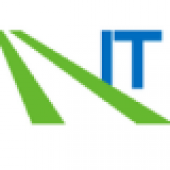Storage Management Software: Users Weigh In
IT professionals reveal the pros and cons of using NetApp OnCommand Insight and Dell EMC ControlCenter.
April 19, 2018

Data storage never seems to stop evolving in ways that challenge IT departments. Aside from the need to deal with perpetual growth, data storage now requires management across cloud and on-premises infrastructure as well as hybrid environment. Different workloads also require varying service levels from storage solutions. Storage management tools have had to keep up with this rapid change.
Storage management tools give storage managers a way to stay on top of storage systems. They enable storage managers to track utilization, monitor performance and more. What do users actually think of storage management tools on the market today?
The discussion about storage management software on IT Central Station reveals that storage is about more than just storing data. It’s about keeping businesses running optimally. When customers can’t see their data, that’s not a storage problem. It’s a business problem. For this reason, storage managers appreciate storage management solutions that offer real time visibility into storage performance and the ability to compare relative performance from multiple storage systems. They like products that are responsive and efficient to use, with a “single pane of glass” and automated alerting.

storage software 2.jpg
The following reviews from IT Central Station users highlight the pros and cons of two top storage management software products: NetApp OnCommand Insight and Dell EMC ControlCenter.
NetApp OnCommand Insight
A storage administrator at a financial services company who goes by the handle StorageA7774, cited the product's comprehensive view:
“Since we have to monitor multiple systems, it gives us a single pane of glass to look at all of our environments. Also, to compare and contrast, if one environment is having some issues, we can judge it against the other environments to make sure everything is on par with one another. In the financial services industry, customer responsiveness is very important. Financial advisors cannot sit in front of a customer and say, ‘I can't get your data.’ Thus, being up and running and constantly available is a very important area for our client.”
Carter B., a storage administrator at a manufacturing company, cited a several ways OnCommand Insight helps his organization:
“The tracking of utilization of our storage systems; seeing the throughput—these are the most important metrics for having a working operating system and working storage system. It's centralized. It's got a lot of data in there. We can utilize the data that's in there and the output to other systems to run scripts off of it. Therefore, it's pretty versatile.”
However, a systems administrator at a real estate/law firm with the handle SystemsA3a53, noted a small drawback:
“There was a minor issue where we were receiving a notification that a cluster was not available, or communication to the cluster. OnCommand Manager could not reach a cluster, which is really much like a false positive. The minor issues were communications within the systems.”
And StorageA970f, a storage architect at a government agency, suggested an improvement to the tool's interface:
“Maybe a little bit more graphical interface. Right now -- and this is going to sound really weird -- but whatever the biggest server is, the one that is utilizing the most storage space, instead of showing me that server and how much storage space, it just shows it to you in a big font. Literally in a big font. That's it. So if your server is named Max and you've got another server named Sue, and Max is taking up most of your space, all it's going to show is just Max is big, Sue is little. That's is really weird, because I really want to see more than that. You can click on Max, drill down in and see the stuff. But I would rather, on my front interface, say, ‘Oh, gosh, Max is using 10 terabytes. Sue is only using one. She's fixing to choke. Let me move some of this over.’”
Dell EMC ControlCenter
Gianfranco L., data manager at a tech services company, described how Dell EMC ControlCenter helps his organization:
“We use the SNMP gateway to aggregate hardware and performance events. The alerting feature is valuable because it completes the gap of storage monitoring. Often the storage comes with a tele-diagnostic service. For security purposes, it’s very important for us to be aware of every single failure in order to be more proactive and not only reactive.”
Bharath P., senior storage consultant at a financial services firm, described what he likes about the product.
“Centralized administration and management of SAN environment in the organization are valuable features. Improvements to my organization include ease of administration and that it fits in well with all the EMC SAN storage”
However, Hari K., senior infrastructure analyst at a financial services firm, said there's room for improvement with EMC ControlCenter:
“It needed improvement with its stability. Also, since it was agent-based communication, we always had to ensure that the agents were running on the servers all the time.”
Gianfranco L., also cited an area where the product could do better:
“The use of agents is not easy. The architectural design of using every single agent for every type of storage can be reviewed with the use of general proxies. The general proxies also discover other vendors’ storage. This can be done with custom made scripts.”
About the Author
You May Also Like




